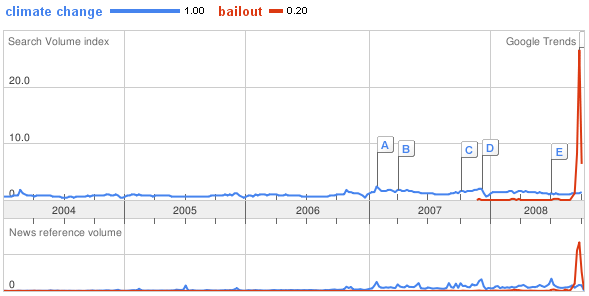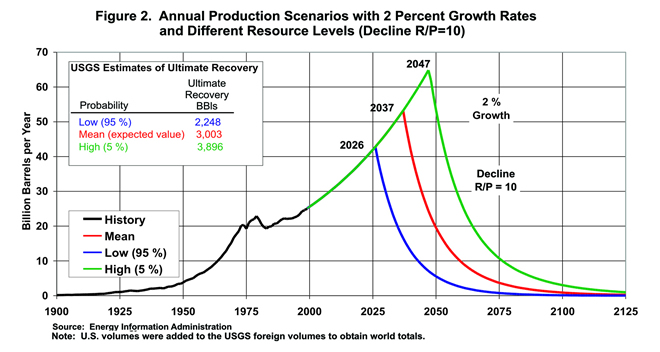Nature has a review, by economist Dieter Helm, of William Nordhaus’ new book, A Question of Balance. I don’t have the book yet, but I’ll certainly check it out. I like the conclusion of the review:
But it may be naive to assume that substituting for environmental systems is so easy. Feedbacks in the system may be such that as climate change unfolds, the return on capital and hence the discount rate falls. Environmental damage may slow or stop economic growth; if that were the case, we would not be much better off in the future. And if we are not so well off in growth terms, Nordhaus’s slower and more measured policy approach may not be so favourable over taking rapid action now. In other words, Stern’s conclusion might be correct, but not his derivation of it ’” right answer, wrong analysis.
This is a crucial point. Richard Tol pointed out the substitutability problem back in 1994 but it hasn’t really found its way into formalization in mainstream IAMs. The issue of slowing or stopping growth isn’t limited to climate feedback; oil and gas depletion, the ever-present possibility of conflict, and degradation of other resources also impose constraints.
I have to take issue with one part of the review:
Where A Question of Balance has most power is where it is most controversial. Nordhaus tackles Stern head on. Stern’s case for urgent action, which the DICE model shows would be excessively expensive in the short term, rests upon his radical assumption that the time discount rate should be close to zero. This means that we should value people’s consumption equally regardless of whether they live now or in the future. Nordhaus has little time for this moral philosophy: he takes a much more positivistic position, grounded in market evidence and what people actually do, as reflected in market interest rates. The difference between Nordhaus’s optimal climate change policy and Stern’s policy based on a zero discount rate translates into a tenfold difference in the price of carbon. Stern’s discounting approach, Nordhaus argues, gives too low a rate of return and too big a savings rate on climate-stabilizing investments compared with actual macroeconomic data. Not surprisingly, then, his verdict is damning. [emphasis added]
The Stern discounting critique has been done to death. I recently discussed some of the issues here (in particular, see the presentation on discounting and welfare in integrated assessment modeling, based on the primer I wrote for last year’s Balaton meeting). In a nutshell, the discount rate can be decomposed into two terms: pure time preference and inequality aversion. Ramsey showed that, along an optimal growth path,
- interest rate = pure time preference + inequality aversion x growth rate
Stern has been criticized for choosing discounting parameters that aren’t consistent with observed interest and growth rates. That’s true, but let’s not confuse the map with the territory. Stern’s choice is inconsistent with the optimal growth framework, but is the optimal growth framework consistent with reality? Clearly, market interest rates reflect what people actually do in some sense, but they do it in a rather complex institutional setting, rife with opportunities for biases and misperceptions of feedback. Do market interest rates reflect what people actually want? Unfortunately, the micro foundation of macroeconomics is too wobbly to say.
Notice also that the equation above is underdetermined. That is, for realistic growth and interest rates, a variety of pure time preference and inequality aversion assumptions yield equality. Nordhaus, in his original DICE work, preferred 3%/yr pure time preference (no interest in the grandkids) and unit inequality aversion (doubling my income yields the same increment in happiness as doubling a poor African farmer’s income). Dasgupta prefers zero time preference on ethical grounds (as did Ramsey) and higher inequality aversion. The trouble with Nordhaus’ approach is that, unless the new book cites new research, there is no empirical basis for rates of time preference that heavily discount the future. It is difficult to create a realistic simulated context for such long term decisions, but the experimental evidence I’ve seen suggests quite the opposite, that people express some concern for even the distant future.
Thus it’s a mistake to call Nordhaus’ approach “positivistic.” That lends undue authority to what should be recognized as an ethical choice. (Again, this is subject to the caveat that Nordhaus might have new evidence. I await the book.)



